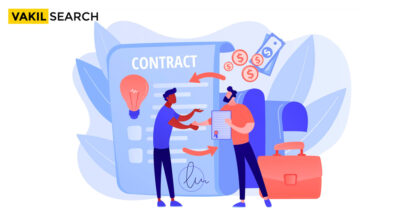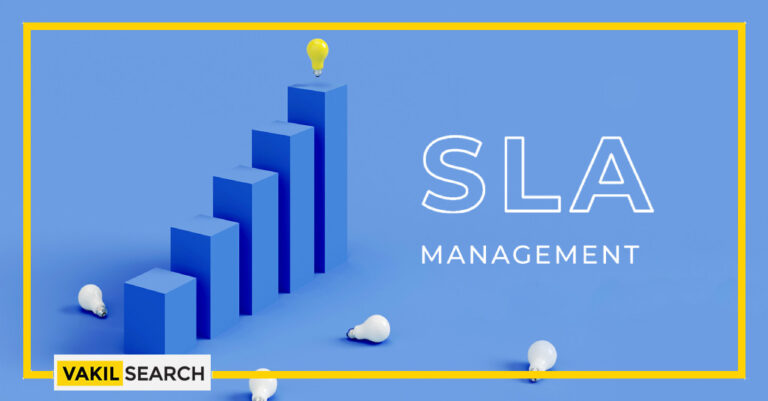This blog describes how to design SLA structures and its critical benefits with processes to set up an SLA.
A service level agreement (SLA) is a legally enforceable signed document and one or more customers that specify the conditions and contracts that regulate the period of the support engagement – that is, whenever the customer is earning for the offerings. The supplier is contractually obliged to deliver those.
In today’s world, businesses rely heavily on technology to deliver services and products to their customers. With this reliance on technology comes the need for service level agreements (SLAs) to ensure that the services provided are of high quality and meet customer expectations. In this essay, we will explore what SLAs are, why they are important, and how they are structured.
An SLA clarifies the details of the services to be delivered, the objectives of both entities (the supplier and the client firm), qualifications, and the contact points. It also defines what will happen if the SLA objectives aren’t accomplished.
In the case of IT products, the SLA establishes the service company’s quality requirements. SLA measurements, which are commonly synonymous with the word SLA, contain these criteria.
Consider the case where a cloud hosting could scale for the expected wealth of resources but couldn’t satisfy the uptime requirement. It’s standard industry jargon to declare they achieved one SLA but failed to meet another. An SLA is a complete document outlining the service company’s performance expectations. IT cable companies are stated to satisfy or breach several SLAs.
Aside from the contrast between SLAs and SLAs, an agreement (SLA) is a critical contract document in the IT field that establishes client-vendor agreements.
Service Level Agreements Have Several Advantages.
IT service companies can:
- Set open and unambiguous anticipations: A statement of work informs the client exactly what to anticipate, beyond advertising lingo, before they begin a customer experience. For instance, a vendor may claim “up to 99.999 per cent uptime,” yet the client’s current membership tier may only allow 99.9% high availability.
- Improve relations with clients: There are no unfulfilled obligations. Furthermore, a solid service level agreement boosts trust in the vendor’s capacity to deliver. This develops connections and assures that clients keep their end of the bargain.
- Address missed SLA goals: When SLA conditions aren’t fulfilled, the supplier and the customer know what’s what. Clients are given the option of receiving refunds or any other remedies if the company expects benchmarks are not met. Because the failsafe is embedded into the contract, suppliers can also avoid any legal indemnity in a criminal court.
- Provide consistency and deals with the planning: Vendors may prepare ahead of time for the required service capacity and quality. This is very handy for SLAs that aren’t standard.
- Improve organisation’s performance: The presence of an SLA necessitates monitoring and measuring its terms. This provides valuable information about staff performance, operational efficiencies, and weaknesses (if any). You can enhance your organisation‘s skills by ensuring 100% SLA compliance.
Structure of an SLA
An SLA typically includes several sections, including:
- Service description: This section outlines the services that the service provider will deliver, including any specific requirements or limitations.
- Performance metrics: This section defines the performance metrics that will be used to measure the quality of the services provided. Metrics may include uptime, response time, and resolution time.
- Service levels: This section outlines the service levels that the service provider will deliver, including any penalties for failing to meet the agreed-upon service levels.
- Reporting and monitoring: This section describes how the service provider will report on their performance and how the customer will monitor the service provider’s performance.
- Escalation procedures: This section outlines the steps to be taken if service levels are not met, including who to contact and how to escalate the issue.
- Service credits: This section outlines any service credits or financial penalties that may be awarded if service levels are not met.
The 5 Most Important Service Level Agreement (SLA) Indicators
A service level agreement is built around measurements. They establish a measurable standard that the network operator must reach or beat. They also enable spotting SLA violations simpler.
-
High Availability And Reliability
For service level agreements, availability and downtime are practically standard criteria. They show when clients can anticipate being able to view and then use the product. For example, the availability for a support department could be 12 hours every day, six days per week. High availability in the cloud is often between 99 per cent and 99.999 per cent. Availability and reliability are fundamental criteria in all 3 SLA instances we provided from Google, Microsoft, and IBM.
-
Timeframes For Responses
Response times are frequently mentioned as a significant SLA criterion by IT service providers across the board. It is because customers will expect rapid action in an adverse event. The provider, on the other hand, can only respond if it has adequate resources. The typical response timing measure aims to create an optimal balance between problem resolution and supplier resource utilisation. Depending on the event’s importance, you can choose different response times for different membership tiers (expensive subscriptions receive faster responses).
-
The Time It Takes For A Problem To Be Resolved In The Interim.
The mean time it takes to solve an issue, from when it is raised to when it is resolved, is referred to as average to settlement (MTTR). While problems might vary greatly during an assignment, you can categorise tickets based on their difficulty level and track their mean time to resolution (MTTR). Including an MTTR in the service agreement can ensure somebody will respond to the client’s issue and resolve it quickly.
-
Rate Of Defect Or Error
The term “defect rate” comes from the manufacturing business, which refers to the number of defective items as a percentage of the total output volume.
Fault or mistake rates can now assess internal and external quality. For example, in the testing process, you may determine the number of defects per 1000 code lines.
-
Issues Are Resolved The First Time.
One can also describe service efficiency in terms of how many contacts it takes to resolve issues and MTTR. A quasi issue can, in theory, be resolved straight at tier 1 or L1 specific project, with only one interaction required. The client experience can be significantly improved through first-time response and identity solutions.
Set Up An SLA In 6 Easy Steps
Step 1: Match client goals to available capabilities.
The company’s objectives will determine the end SLA form for your solutions. For instance, if a customer uses your cloud storage to power its eCommerce site, they may expect near-100 per cent reliability and resolving issues in less than a day. So first, determine customer goals with your one-of-a-kind service offering, then map them against your internal funds to evaluate how you can realistically transport more.
Step 2: Establish benchmarks for your key performance indicators (KPIs).
The second stage uses critical performance metrics to measure these goals (KPIs). As a starting point, these KPIs must consider the industry average. Do most of your rivals, for instance, guarantee your >99 per cent uptime? What is the median speech-to-text prediction accuracy among significant competitors if you are artificial intelligence (AI) translation supplier? Finally, ascertain that the SLA offers performance that is on par with or better than these benchmarks to provide a compelling business case to the client.
Step 3: Established tracking systems and displays
Internally and client-facing monitoring equipment and displays are required. The external monitor will keep track of service levels to ensure they don’t go below the SLA targets. A customer monitor improves transparency by allowing end-users to monitor performance levels even when there’s no problem. Set automatic alerts based on the benchmark and adapt your monitoring equipment to the KPIs determined in the previous stage.
Step 4: Develop documentation and distribute it to team members.
You can now start working on the first draft of the SLA specification. It will consist of the following elements:
- A summary of the services provided
- Exemptions and exclusions • Key result metrics
- Terminology definitions • Client requirements • Information on client-facing panels
- Recourse if duties aren’t met
Step 5: Complete the document and distribute it to the client (s)
You may receive input on improving service-level agreements from the service, maintenance, and legal staff. After making the necessary modifications, you’ll have completed paperwork that you can send to the customer. Before publishing the SLA, make sure it has been evaluated regarding your portion size, client service skills, and local and sector laws.
Step 6: Take into account all of the input you’ve received.
Lastly, the customer may wish to amend the SLA and renegotiate the service conditions. This is critical when signing custom contracts, such as when a managed IT services company begins an outsourced contract with a global corporation. You may need to repeat this six-step procedure based on the scope of the desired changes. A significant adjustment, such as boosting uptime by several per cent, will necessitate a review of available resources, new consultations with stakeholders, and creating a new draft.
Conclusion
The blog focuses on the necessary steps and procedures to look into while designing an SLA structure. In conclusion, service level agreements are essential for ensuring that service providers deliver high-quality services that meet customer expectations. They provide a clear framework for service providers to follow and help to reduce misunderstandings and disputes between service providers and customers. When structured properly, SLAs can be an effective tool for improving service quality and customer satisfaction.
Also, Read:










